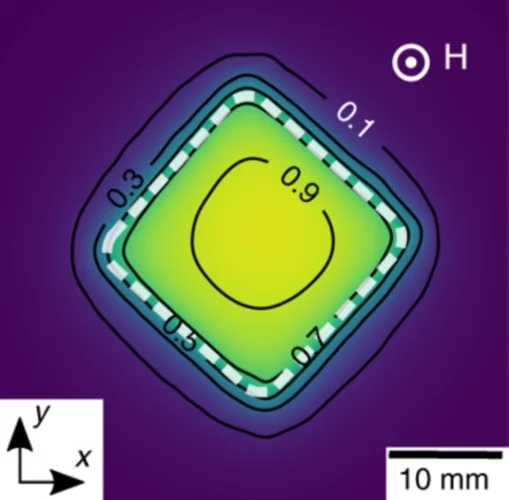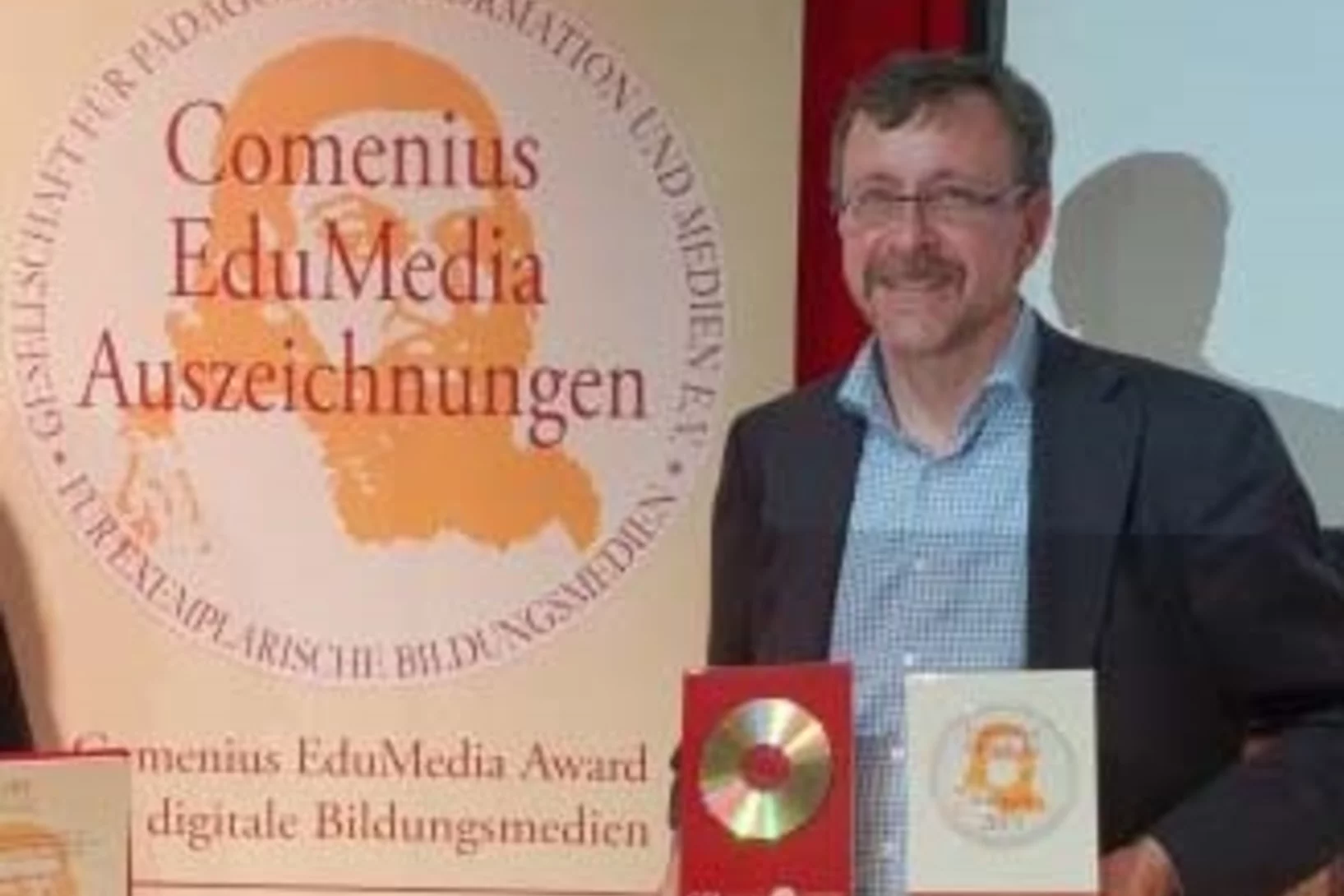Am PSI widmen sich mehrere Projekte wichtigen Forschungsfragen rund um das Coronavirus Sars-CoV-2 und den daraus resultierenden Erkrankungen. Wir informieren über Aktivitäten und Vorhaben, zum Beispiel zu Untersuchungen von Lungengewebe, zur Produktion von Proteinen und Antikörpern oder über Ideen für neue Forschung zu Covid-19.
Nützliche Links
Visualization and quantification of inhomogeneous and anisotropic magnetic fields by polarized neutron grating interferometry
The intrinsic magnetic moment of a neutron, combined with its charge neutrality, is a unique property which allows the investigation of magnetic phenomena in matter. Here we present how the utilization of a cold polarized neutron beam in neutron grating interferometry enables the visualization and characterization of magnetic properties on a microscopic scale in macroscopic samples.
Araris Biotech AG closes seed financing round of CHF 2.5 million
Araris Biotech AG (a spin-off company from the Paul Scherrer Institute (PSI) and ETH Zurich) announced today the closing of an oversubscribed seed financing round of CHF 2.5 million with participation of Swiss investors Redalpine, Schroder Adveq and VI Partners. The proceeds will be used to develop a pipeline of proprietary antibody-drug conjugates (ADCs)
Modulated excitation methodology
V2O5/TiO2 SCR catalysts
An increased level of mechanistic information is obtained when Raman spectroscopy is combined with modulated excitation in the case of V-based catalysts used for SCR.
TOMCAT team hikes the UNESCO World Heritage Site Tectonic Arena Sardona
As summer tradition TOMCAT hikes in the Alps to enjoy fresh mountain air and have fun in each other's company. This year the TOMCAT team hikes in the UNESCO World Heritage Site Tectonic Arena Sardona.
Lehrabschlussfeier 2019
Am Freitag, 16. August 2019 fand die Lehrabschlussfeier statt, bei welcher wir 28 neue Berufsleute zu ihrem Abschluss gratulieren durften! Wir sind sehr stolz auf sie!
Feststoffbatterien bei der Verformung beobachten
Forschende des PSI haben mechanische Vorgänge in Feststoffbatterien so genau wie noch nie beobachtet. Mittels Röntgentomografie an der Synchrotron Lichtquelle Schweiz SLS entdeckten sie, wie sich Risse im Inneren der Batterien ausbreiten. Die Erkenntnisse können dabei helfen, Akkus für Elektroautos oder Smartphones sicherer und leistungsfähiger zu machen.
Einführungswoche 2019
29 neue Lernende und Praktikanten haben am Montag, 5. August 2019 gespannt und wohl auch ein wenig aufgeregt den Schritt in die Arbeitswelt bei uns im PSI gewagt. Wir wünschen ihnen einen guten Start und eine erfolgreiche Lehr- und Praktikumszeit.
Operando X-ray Characterization of High Surface Area Iridium Oxides to Decouple their Activity Losses for the Oxygen Evolution Reaction
The increasingly popular power-to-gas technology for the utilization of hydrogen as a clean energy vector involves the use of electrolyzers to convert water into H2 and O2. The oxygen evolution reaction (OER) is the least efficient among these processes, and a catalyst is required to speed up its kinetics at the high potentials (customarily ≥ 1.4 V vs. the reversible hydrogen electrode) at which the reaction takes place.
Operando X-ray Characterization of High Surface Area Iridium Oxides to Decouple their Activity Losses for the Oxygen Evolution Reaction
In order to clarify the mechanism behind this activity loss, in this study two high surface area iridium oxides were characterized under operando conditions using a novel setup that allows the quasi-simultaneous acquisition of anomalous small angle X-ray scattering (A-SAXS) and X-ray absorption spectroscopy (XAS) data.
Forschen über den Wolken
Auf der Forschungsstation Jungfraujoch untersuchen PSI-Wissenschaftler Feinstaubpartikel. Und müssen damit klarkommen, dass der menschliche Körper nicht für ein Leben auf 3500 Meter über dem Meer gemacht ist.
Small-Angle Neutron Scattering Study of Temperature-Induced Structural Changes in Liposomes
Liposomes of specific artificial phospholipids, such as Pad-PC-Pad and Rad-PC-Rad, are mechanically responsive. They can release encapsulated therapeutics via physical stimuli, as naturally present in blood flow of constricted vessel segments. The question is how these synthetic liposomes change their structure in the medically relevant temperature range from 22 to 42 °C.
Glycation of collagen in decellularized pericardium tissue: pilot study
Aging populations and diabetics suffer from the effects of the glycation of collagen, the non-enzymatic formation of glucose bridges. While the secondary effects have been studied intensely, comparatively little is known on the direct effect of glycation on the structure of collagen. It has been demonstrated in this study, that the direct impact of glycation can be determined with sub-atomic precision, and that a model system based on abundantly available connective tissue of farm animals can be used for such studies. This opens new avenues for inspecting the effects of diabetes mellitus on connective tissues and the influence of therapies on the resulting secondary disorders.
LIN builds pressure vessels for joint detector project with FRM-II in Munich
Highly efficient two-dimensional detectors are essential for the performance of modern neutron diffractometers. The NUM Division of PSI and the Technical University Munich TUM jointly develop two identical new 3He gas detectors, one for the diffractometer DMC at SINQ and the other for operation at FRM-II in Munich.
PhD Defence Fei Li
On 31.05.2019, Fei Li passed successfully his PhD defence at the ETH Materials Department. The title of his thesis is "Crystal and Magnetic Structure of R1/3Sr2/3FeO3 (R = La,Pr,Nd)”
Save the Date - IDCN Event organised by PSI on 26th September 2019 at the FHNW Brugg-Windisch
On 26th September 2019, PSI will host its second IDCN-event at the FHNW Brugg-Windisch (right next to the trainstation Brugg AG) in cooperation with IDCN Zurich.
The International Dual Career Network (IDCN) is a non-profit organization formed through the collaboration of academic institutions, companies and NGOs with the purpose of facilitating the job search for mobile employees’ partners, and providing member companies access to a turnkey pool of talent. Since 2017, PSI is a corporate member of IDCN.
Chemically mapping ice forming particles
Scientists have just nucleated ice in an X-ray microscope for the first time and they created chemical maps of those responsible.
PSI participates in ECNS in St Petersburg
The European Conference on Neutron Scattering (ECNS) with its recent 2019 edition in St. Petersburg is a spree of lectures, poster sessions, and expert talks on the current trends and future possibilities in neutron science. PSI with its neutron source SINQ was represented by members of the three NUM laboratories LNS, LMX and LIN. In addition, PSI was silver sponsor of ECNS 2019 and is also a member of the LENS consortium (League of Advanced European Neutron Sources).
Experimental signatures of a three-dimensional quantum spin liquid in effective spin-1/2 Ce2Zr2O7 pyrochlore
A quantum spin liquid is a state of matter where unpaired electrons’ spins, although entangled, do not show magnetic order even at the zero temperature. The realization of a quantum spin liquid is a long-sought goal in condensed-matter physics.
Chemically mapping ice forming particles
Scientists have just nucleated ice in an X-ray microscope for the first time and they created chemical maps of those responsible.
Weyl-Fermionen in einer weiteren Materialklasse entdeckt
Eine besondere Art von Teilchen, sogenannte Weyl-Fermionen, waren bislang nur in bestimmten nicht-magnetischen Materialien gefunden worden. Jetzt aber haben PSI-Forschende sie erstmals auch in einem besonderen paramagnetischen Material experimentell nachgewiesen.
Feriencamp 2019
Vom 8. - 12. Juli durften erneut 36 Kinder von PSI-Mitarbeitenden am diesjährigen Feriencamp teilnehmen. Bei schönem und nicht zu heissem Sommerwetter erlebten sie eine abwechslungsreiche, unterhaltende und interessante Woche am PSI. Nur durch die zahlreichen Helferinnen und Helfer bei der Gruppen- und Stationsbetreuung war dies überhaupt möglich. Ein herzlicher Dank ihnen allen!
Spin fluctuation induced Weyl semimetal state in the paramagnetic phase of EuCd2As2
Weyl fermions as emergent quasiparticles can arise in Weyl semimetals (WSMs) in which the energy bands are nondegenerate, resulting from inversion or time-reversal symmetry breaking. Nevertheless, experimental evidence for magnetically induced WSMs is scarce. Here, using photoemission spectroscopy, we observe that the degeneracy of Bloch bands is already lifted in the paramagnetic phase of EuCd2As2. We attribute this effect to the itinerant electrons experiencing quasi-static and quasi–long-range ferromagnetic fluctuations.
Soft biomimetic nanoconfinement promotes amorphous water over ice
Water is a ubiquitous liquid with unique physicochemical properties, whose nature has shaped our planet and life as we know it. Water in restricted geometries has different properties than in bulk. Confinement can prevent low-temperature crystalliza- tion of the molecules into a hexagonal structure and thus create a state of amorphous water. To understand the survival of life at subzero temperatures, it is essential to elucidate this behaviour in the presence of nanoconfining lipidic membranes.
Abschlussfeiern an den Berufs- und Maturitätsschulen 2019
Ende Juni bis Mitte Juli durften unsere Berufsbildnerinnen und Berufsbildner an den Abschlussfeiern an den Schulen teilnehmen. Stolz gratulieren wir unseren Lernenden, welche das diesjährige Qualifikationsverfahren und die Berufsmaturität so erfolgreich bestanden haben, ganz herzlich!
3D magnetic structures
Three-dimensional magnetic nanostructures developed at LMN in collaboration with NUM-LMX and University of Glasgow have been featured on the cover of Materials Today.
Tomonaga-Luttinger Liquid Spin Dynamics in the Quasi-One-Dimensional Ising-Like Antiferromagnet BaCo2V2O8
Combining inelastic neutron scattering and numerical simulations, we study the quasi-one-dimensional Ising anisotropic quantum antiferromagnet BaCo2V2O8 in a longitudinal magnetic field. This material shows a quantum phase transition from a Néel ordered phase at zero field to a longitudinal incommensurate spin density wave at a critical magnetic field of 3.8 T.
Lehrlingsevent des Gewerbevereins Aaretal-Kirchspiel 2019
Dieses Jahr fand der traditionelle Lehrlingsevent des Gewerbevereins Aaretal-Kirchspiel am Freitag, 5. Juli bei heissem Sommerwetter im Landgasthof Schloss Böttstein statt. 7 PSI-Lehrabsolventinnen und –absolventen nahmen daran teil und erhielten mit ihren guten Abschlüssen viele Preise.
Molekulare Energiemaschine als Filmstar
Forschende des PSI haben mithilfe der Synchrotron Lichtquelle Schweiz SLS eine molekulare Energiemaschine in Bewegung aufgenommen und so aufgedeckt, wie die Energiegewinnung an Zellmembranen funktioniert. Dazu entwickelten sie eine neue Untersuchungsmethode, die die Analyse von zellulären Vorgängen deutlich effektiver machen könnte als bislang.
Das Energiesystem der Zukunft und Power-to-X
Forschende des Paul Scherrer Instituts PSI analysieren das Potenzial von Power-to-X für die Energieversorgung der Schweiz und stellen ihre Ergebnisse in einem Weissbuch vor. Ein Resultat: Die Kosten für Energie aus Power-to-X könnten um bis zu einem Drittel fallen.
Comenius Medal for eCourse «Ethics in Research»
Dr. Helmut Schift, head of polymer nanotechnology group of LMN and consultant for research integrity at PSI, received the Comenius medal on 27 June 2019 in Berlin. The Comenius-EduMedia-Award is granted for outstanding examples of digital educational media.




























